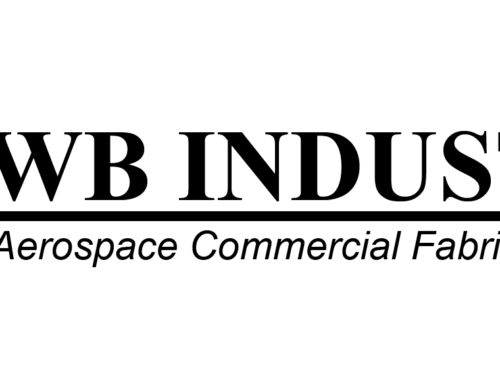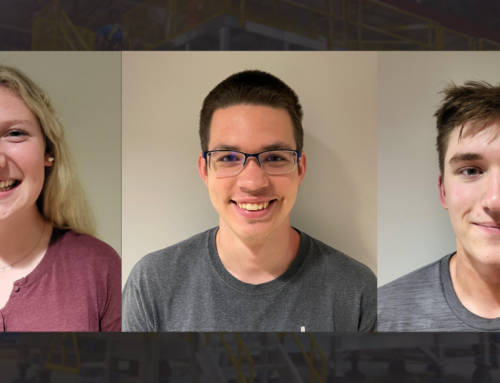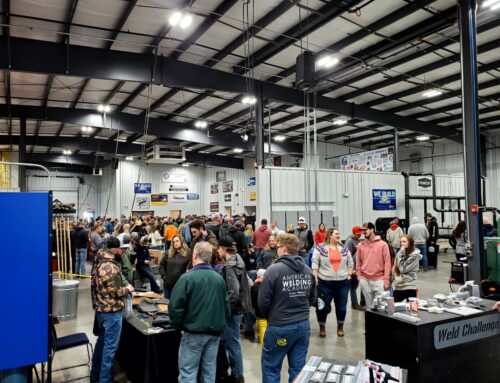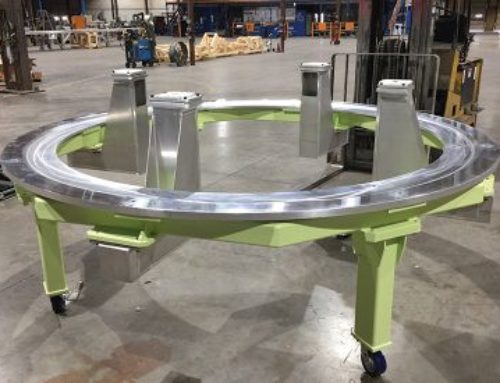WATERJET TECHNOLOGY HELPS A BOUTIQUE FABRICATION SHOP LAND NICHE JOBS
Gary Bertolucci, president of WB Industries, has three decades behind him in the manufacturing industry and just about as many years of experience coaching football. Taking the “team approach” is nothing new to him, and he employed that strategy to find the type of machines that would help push his business to new heights. Among those machines was a waterjet, and it’s one of the most important tools the company uses to build the complex products in demand by its aerospace customers as well as those in other industries.


From design and engineering experts to a strong finance professional, Bertolucci says in order to make the right capital investment, “it takes a team and you’ve got to hear from everyone.” It’s an approach WB Industries takes on every investment in an effort to meet the needs of the customer.
WB Industries, located in O’Fallon, Mo., is a custom metal fabrication company, serving some of the biggest names in the aerospace industry, and in doing so, the team at WB has definitely made a name for themselves. As just one example, WB Industries has received the Boeing Performance Excellence Award every year since 2007. The company manufactures products related to parts handling and support equipment, safety equipment, storage and shipping containers, structural steel construction packages, infrastructure equipment, and machined components and assemblies.
When Bertolucci took over in 2006, the shop relied heavily on plasma cutting machines while outsourcing high-definition plasma and waterjet cutting. Through years of hard work, the previous owners had built up the business from a garage to an 80,000-sq.-ft. facility, but Bertolucci knew his team could achieve even more success.


“I really viewed the business as scalable and able to go into different directions,” Bertolucci says, adding that he wanted to do more work requiring rigorous demands. Few industries are more demanding than aerospace. “We set about becoming a boutique fabricator and doing difficult projects. What we build doesn’t look complicated until you look a little deeper and see what the customer needs from a dimensional standpoint and a specification standpoint. Our niche is doing the harder, tougher jobs and we have built a reputation for being that type of company.”
Waterjet needed
Becoming a go-to boutique fabricator involved taking a new look at the equipment being used and recognizing the need to outsource various jobs to companies that had waterjets.
“We recognized more and more that for us to be able to build weldments the way we need to, we can’t use plasma, and most of the time we can’t use laser, either,” Bertolucci says. “We found a couple of small shops with waterjets, but we were just loading them up with work. It got to the point where the payback after investing in our own waterjet started to make a lot of sense.”
With waterjet technology, WB Industries was able to go from a “that’s impossible” position in regard to customer needs to “that’s possible.”
“We’re dealing with mammoth companies and they’re demanding,” Bertolucci says. “They have engineers that put big expectations on some of these parts, and from a fabrication standpoint, we just say, ‘that’s insane. We can’t hold it that way,’ or ‘we can’t do it that way.’ So, we have to get over that and say, ‘okay, there’s got to be a way because this is what they want.’”


The process of “figuring out a way” involves talking to the fabricators and welders – the workers on the shop floor – and discussing options for fine-tuning their approach. And it’s not just about bringing in waterjet technology. It also involves taking a new approach to the welding technology and upgrading, as needed, to more intuitive solutions.
“And then we have to look at what we have to do for our employees,” Bertolucci says. “This includes ergonomics and making sure they’re able to work in an atmosphere that’s going to give them a chance to be successful. So it’s all-encompassing. Waterjet is part of those many things.”
Waterjet rescue
After about nine months of researching and investigating and watching various brands of waterjets in action, WB Industries landed on Flow International Corp.’s Mach 3 model.
“Mainly because it was a truly more robust machine in comparison to others,” Bertolucci says.
Bertolucci and his team saw the Mach 3 4020B as a “stout” machine with plenty of strength, adding that the “guts of the machine showed us that it was going to give us a lot of life.”
And it has; WB Industries has only had to partake in routine maintenance on the machine. The waterjet has a 13-ft.-by-6.5-ft. bed and a 60,000-psi pump, which can handle the thickest cuts. Foam and wood can also be cut with the waterjet, which occurs every so often.
“We can literally cut a rock on this thing,” Bertolucci muses. “We can cut 2-in. metal, and, compared to the kerf on other types of cutting machines, we’re going to get a pretty square cut. It gives the ultimate flexibility, and for a company like ours that doesn’t do the same thing very often, having that flexibility is important.”
The Mach 3 has a premium motion system, which includes a precision ball screw with spin-in-the-nut technology and high-resolution digital drives that offer quick, yet accurate movement. The machine is made with heavy-duty, thermally stress-relieved steel, which explains Bertolucci’s take on the stoutness of the machine. Flow also offers simple-to-use, integrated software, allowing users to program cuts quickly on any material.
“We can cut all different types of jigging and fixtures on the waterjet,” Bertolucci says, “which puts us in a better position to be able to make products for our downstream welding and fit-up. So, it’s not just about making a production part; it’s about making a part that we might use only once. That helps us to be a lot more effective setting up, jigging and fixturing a weldment.”

Customer-centric
Part of what led to WB Industries acquiring waterjet technology came from its customers. While most customers don’t really care what technology is used to produce their parts – they just want it done right and on time – getting the job done right is sometimes only possible using waterjets. Yes, waterjets are slower than lasers and plasma on most jobs, but for Bertolucci and his team, adopting waterjet technology was part of taking the “it can’t be built” mantra out of the equation.
Bertolucci says if the shop had held onto the technology it used when he began leading WB Industries 14 years ago, “we would be eliminated from building the kind of structures and detailed items that we build now.”
Furthermore, through waterjet and other advanced technologies, WB Industries developed a reputation for taking on tough jobs.
“We’re intent on making sure we listen to our customers and recognize the things that are going to make a difference,” Bertolucci concludes, “from upgrading our welding equipment to really making sure that we’re training our employees properly. Keeping good, skilled employees is still, at the end of the day, the most vital part of us being able to be successful.”
Article originally appeared at FabShop Magazine Direct






